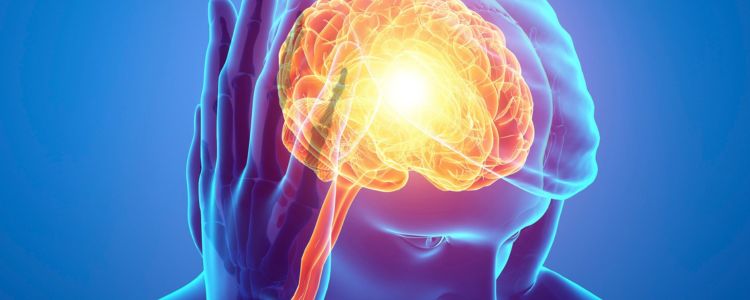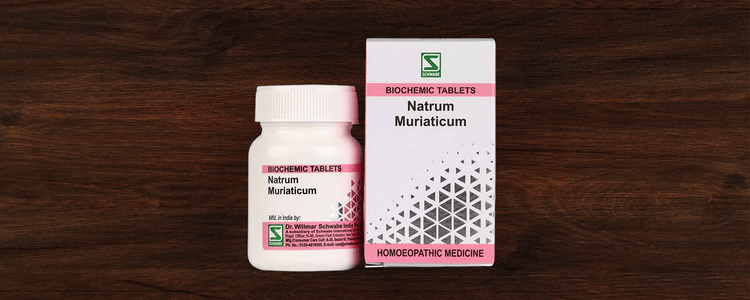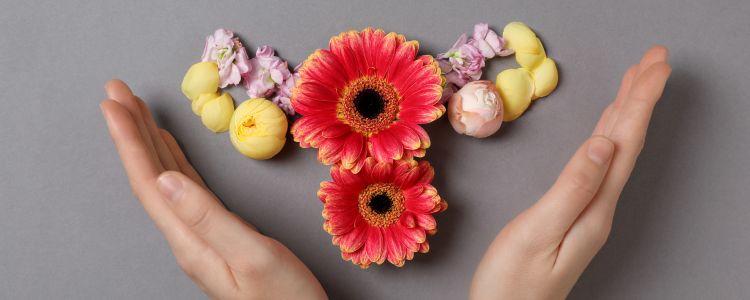
How Natrum Muriaticum Can Transform Your Health
- Dr. P T Ponmani
- No Comments

Table of Contents
ToggleA Deep Dive into Natrum Muriaticum: A Journey of Healing
When we think of table salt or sodium chloride, it is hard to imagine that something so common and readily available ingredient in our kitchen cabinet could possess such profound healing properties in our body, and yet, in the world of homoeopathy, Natrum muriaticum has been heralded as one of the deep acting and transformative remedy that touches the body and the tender recesses of the heart and mind. Its profound healing properties are fascinating and draw those seeking emotional and physical healing.
At its core, Natrum muriaticum is a mineral remedy derived from sodium chloride, a substance present in nearly every environment, including oceans, tears, blood, and sweat. However, when potentized through homoeopathy’s gentle, rhythmic process, it undergoes a profound transformation. It is a natural homoeopathic remedy indicated for the emotionally wounded and the physically distressed, leading to healthy healing and transformation.
The Emotional Essence: Grief, Isolation, and Silent Suffering
Natrum muriaticum is synonymous with a special emotional sensitivity and a tendency to suffer silently. It is for those who cannot bear the burden of heartbreak, disappointment, or grief. These people tend to brood over past happenings and are unable to move ahead, much less verbalize pain. They are outwardly calm, even jovial. Inwardly, we, as empathetic individuals, can understand and relate to a deep well of sadness.
They may appear polite, responsible, and reserved—especially in environments that require composure, such as family gatherings or the workplace. When sadness strikes, these souls would rather cry by themselves, far from consoling eyes. Consolation can make them feel worse. They could object to consoling words since they believe that such gestures only draw attention to their fragility.
This remedy has a strange quality, particularly in the paradox of the contradiction in Natrum muriaticum, where there is a strong yearning for love and contact but, at the same time, fear of hurt or betrayal. This fear normally results from initial experiences of rejection or loss, and it is what colours their adult relationships. Sometimes, they find themselves in one-sided or impossible love—such as loving someone already married—where the possibility of a true union is limited. There’s a silent acceptance of the situation in these scenarios, almost as if they’ve already decided it’s safer to love without hope.
Also Read 5 Signs of Mental Stress & Its Cure
The Physical Makeover: From Skin to Headaches
While emotional wounds run deep, Natrum muriaticum’s physical profile is equally rich. It often reveals itself in individuals who are thin, emaciated, or anaemic despite eating well. One striking characteristic is the emaciation of the neck—a telltale sign that the body is shrinking despite good nutrition.
Physically, these individuals are prone to dryness. Think of dry, cracked lips—especially a vertical crack in the centre of the lower lip, a small detail that speaks volumes in homoeopathic language. The skin tends to be dry and can develop eczema-like eruptions, especially in the folds of joints and along the hairline. When the skin does produce discharges, they’re often clear and watery, much like the tears that come so easily.
Natrum muriaticum is a relief for those susceptible to migraines and headaches. Their headaches often follow the sun, starting in the morning and worsening by noon, throbbing like thousands of tiny hammers pounding within their heads. These headaches can arise after emotional upsets, overexertion, or even grief.
The Mind-Body Balance: Depression and Beyond
In homoeopathy, the connection between mind and body is always honoured and respected. Natrum muriaticum is primarily known for addressing depression—the kind that binds a person to bed, disconnecting them from life’s joys and social ties. Such depression is often reactive, following grief, heartbreak, or personal loss. It brings a feeling of being cut off from others, stuck in a loop of self-reproach and isolation.
The most poignant symptoms of this medicine are the state of constant guilt or the belief that one’s actions have caused suffering in others. Sometimes, these individuals feel dirty, unworthy, or convinced that some spiritual or cosmic force punishes them for past deeds. They may be obsessed with atoning for these perceived sins, turning to religious rituals compulsively. It’s as if they’re trying to clean their souls, even as they’re constantly bathing or physically cleaning themselves.
For some, there’s even a quiet, morbid longing for death, a desire to escape the unbearable weight of living, though the courage to act on it is missing. It’s a silent despair, rarely spoken aloud.
The Healing Journey: When Should One Seek Natrum Muriaticum?
Natrum muriaticum shines brightest when these emotional and physical pictures overlap. Imagine a woman in her early forties, married late, still childless, and grappling with the endless demands of in-laws. She’s burdened by religious guilt, endlessly washing away perceived impurity. She argues with her family but can’t escape the sense that she’s at fault for every conflict. This deep sadness intensified after her mother’s death, a wound that won’t heal. In such a circumstance, Natrum muriaticum acts like a bomb, addressing not just her physical dryness or headaches but the profound sorrow of her heart.
The Telltale Modalities
Every homoeopathic remedy has its peculiar triggers and soothers—known as modalities.
For Natrum muriaticum:
- Worse: Exposure to the sun, heat, emotional upheaval, and consolation.
- Better: Being alone in nature, in the open air, or after a good cry—ironically, even if that crying happens alone.
The Constitution: Who Needs Natrum muriaticum?
A person’s physical and emotional constitution guides the selection of remedies in homoeopathic practice. The constitution refers to an individual’s overall physical and emotional makeup, temperament, physical appearance, and susceptibility to certain diseases. Those who require Natrum muriaticum often exhibit a cachectic or anaemic appearance characterized by pale, waxy skin. They’re reserved, inwardly intense, and easily wounded by life’s slights.
Children who need Natrum muriaticum may be late talkers, prone to colds and skin troubles, or even suffer from recurring ear infections or constipation. Adults can experience a cycle of chronic ailments—migraines, skin eruptions, depression—each feeding into the other like a closed loop.
Also Read Homeopathic Remedies For Stress Related Discomforts
Beyond the Individual: The Remedy in Chronic Illness
Natrum muriaticum is more than an emotional salve. It addresses a spectrum of chronic conditions:
- Anaemia and chlorosis (especially in girls during puberty)
- Skin troubles like eczema, psoriasis, and warts
- Gastrointestinal issues—constipation and a tendency toward dryness throughout the digestive tract
- Urinary disturbances, where there’s a marked difficulty in urinating in front of others
Its broad action reflects sodium chloride’s vital role in the body: regulating fluid balance, aiding neural activities, and maintaining the integrity of cell membranes. Just as salt is essential to life, Natrum muriaticum nurtures the soul and the physical body.
The Message of Healing
At its core, Natrum muriaticum educates us on the healing power of acceptance. Recovery usually starts when we permit ourselves to sense the sorrow, cry alone if necessary, and eventually move on from past hurts. It reminds us that though heartbreak and sorrow can perch our spirits like hot-dry sand, they can also be the ground in which new life germinates.
In an age of seeking to be perpetually connected, Natrum muriaticum tale honours the great beauty of withdrawal, contemplation, and quiet rediscovery of happiness.





























